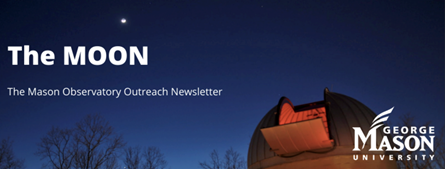Kevin took the NOVAC Messier Challenge! Read about his results – nice job Kevin and thanks for the lessons learned!
Kevin’s Journal:
The goal of this challenge was to try to identify 5 Messier objects in a single night. I decided to try this challenge from my house in Vienna, Virginia on the outskirts of Tysons Corner – a very light polluted area.
Observing was done from the front driveway which has a good view from the zenith to the west/southwest horizon. Looking towards the east, objects will have to clear the house before becoming visible which would put them at about 45 degrees above the horizon. There are some neigbor porch lights but blocking these by using my car parked in the driveway should work. Luckily there are no street lights.
I used the following gear:
Stadium chair for comfortable seating
Adjustable Starlite red flashlight from Rigel Systems
10×50 Orion binoculars with 6.5 degree FOV
iPhone 5C with SkyView Lite app for locating dimmer constellations
PhotoPills app for determining sunset and moonrise
Norton Star Atlas (1977) for locating the Messier object within the constellation
Sky and Telescope Night Sky planisphere for gross placement of the constellations
AAVSO Variable Star Atlas, 2nd Edition for magnitude estimates
Next, I needed a list of potential targets and an order for viewing. The planisphere identified eight constellations decently placed for viewing – Orion, Auriga, Gemini, Perseus, Taurus, Cancer, Cassiopeia, and Ursa Major.
Without knowing the limiting magnitude up front I decided to keep to objects brighter than 7 magnitude visual. Which of these would be visible from a light polluted location using 10×50 binoculars will depend on viewing conditions. Also, some objects may be “smeared” out so even though they may fall within the limitations they may still not be visible. The observational order was determined by the constellation’s placement in the sky starting with those that are setting or westering.
I settled on the following objects in observational order:
M42 Orion Nebula 4.0 mag.
M45 Taurus (Pleides) Open Cluster 1.6 mag
M52 Cassiopea Open Cluster 5.0 mag.
M34 Perseus (Dbl cluster) Open Cluster 5.5 mag.
M36 Auriga Open Cluster 6.3 mag.
M37 Auriga Open Cluster 6.2 mag
M35 Gemini Open Cluster 5.3 mag.
M44 Cancer (Beehive) Open Cluster 3.7 Mag.
M67 Cancer Open Cluster 6.1 mag.
M81 Ursa Major Galaxy 6.9 mag.
Astronomical night began near 8:45pm. The sky appeared to be clear and there was no moon (not rising until 11:25pm) but there may have been high, wispy cirrus clouds. It was hard to tell. Once I was setup, oriented westerly, and dark adapted (about 20 minutes) the next step was to determine both the visual and binocular limiting magnitudes. This would tell me which objects I could see visually and which would be fully dependent on the binoculars to see. I used the Pleiades and the AAVSO Variable Star Atlas 2nd Edition for magnitudes. I estimated the limiting visual magnitude was 4.3 and the binocular limiting magnitude was 6.6 (pretty bright skies). This meant M36, M37, M67 and M81 may be beyond reach.
Given the bright sky conditions there were almost too few stars to identify the constellations! Luckily, I’ve been visually watching the skies for nearly 60 years and knew where each constellation should be (with the help of the planisphere of course and the SkyView Lite app). The hardest to place visually were Perseus and Cancer. Perseus because it was setting and Cancer because it has few “bright” stars. Nevertheless, spotting 5 Messier objects from my list only took an hour. I credit this with choosing only bright objects. Those spotted were:
M42 – no issues
M45 – no issues
M44 – barely visible in binoculars
M35 – barely visible in binoculars
M34 – barely visible in binoculars
Spotting M44, M35 and M34 required several attempts – one to initially spot them and two repeats to ensure they were actually there. Being on the edge of binocular visibility it was sometimes difficult to determine if this was the cluster or just a few dim stars.
The lessons learned from this challenge were two-fold. First, a dark site is always preferred over light-polluted skies for visual observing. But second, if you stick to bright objects there is the potential to detect 14 Messier objects in a single night marathon even from light polluted locales.




One Comment
Very good fundamentals, will serve you well in a dark sky, where it’s easy to get confused.